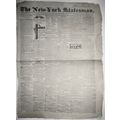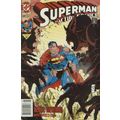Bird - Mallard drakes & duck - Dixon postcard c.1970s
- Condition : Used
- Dispatch : 2 Days
- Brand : None
- ID# : 136308698
- Quantity : 1 item
- Views : 263
- Location : United Kingdom

- Seller : justthebook (+1703)
- Barcode : None
- Start : Sun 11 Jan 2015 06:32:36 (EDT)
- Close : Run Until Sold
- Remain : Run Until Sold
Checks/Cheques
 for 1 item(s) edit
for 1 item(s) edit
Shipping Calculator
More Listings from This Seller view all
Seller's Description
- Postcard
- Picture / Image: Mallard Drakes and Duck (Anas platyrhychos)
- Publisher: J Arthur Dixon (L6/SP.5723)
- Postally used: no
- Stamp: n/a
- Postmark(s): n/a
- Sent to: n.a
- Notes / condition:
Please ask if you need any other information and I will do the best I can to answer.
Image may be low res for illustrative purposes - if you need a higher definition image then please contact me and I may be able to send one. No cards have been trimmed (unless stated).
------------------------------------------------
Postage & Packing:
Postage and packing charge should be showing for your location (contact if not sure).
No additional charges for more than one postcard. You can buy as many postcards from me as you like and you will just pay the fee above once. Please wait for combined invoice. (If buying postcards with other things such as books, please contact or wait for invoice before paying).
Payment Methods:
UK - PayPal, Cheque (from UK bank) or postal order
Outside UK: PayPal ONLY (unless otherwise stated) please. NO non-UK currency checks or money orders (sorry).
NOTE: All postcards are sent in brand new stiffened envelopes which I have bought for the task. These are specially made to protect postcards and you may be able to re-use them. In addition there are other costs to sending so the above charge is not just for the stamp!
I will give a full refund if you are not fully satisfied with the postcard.
----------------------------------------------
Text from the free encyclopedia WIKIPEDIA may appear below to give a little background information (internal links may not work) :
*************
The mallard (/'mæl?rd/ or /'mæl?rd/) or wild duck (Anas platyrhynchos) is a dabbling duck which breeds throughout the temperate and subtropical Americas, Europe, Asia, and North Africa, and has been introduced to New Zealand and Australia. This duck belongs to the subfamily Anatinae of the waterfowl family Anatidae.
The male birds (drakes) have a glossy green head and are grey on wings and belly, while the females have mainly brown-speckled plumage. Mallards live in wetlands, eat water plants and small animals, and are gregarious. This species is the ancestor of most breeds of domestic ducks.[2]
The mallard was one of the many bird species originally described by Carl Linnaeus in his 18th-century work, Systema Naturae, and still bears its original binomial name.[3]
""Mallard"" is derived from the Old French malart or mallart ""wild drake"", although its ultimate derivation is unclear. It may be related to an Old High German masculine proper name Madelhart, clues lying in the alternate English forms ""maudelard"" or ""mawdelard"".[4]
Mallards frequently interbreed with their closest relatives in the genus Anas, such as the American black duck, and also with species more distantly related, such the northern pintail, leading to various hybrids that may be fully fertile.[5] This is quite[clarification needed] unusual among different species, and apparently is because the mallard evolved very rapidly and recently, during the Late Pleistocene. The distinct lineages of this radiation are usually kept separate due to non-overlapping ranges and behavioural cues, but are still not fully genetically incompatible.[6] Mallards and their domesticated conspecifics are also fully interfertile.
The genome of Anas platyrhynchos was sequenced in 2013.[7]
Mallards appear to be closer to their Indo-Pacific relatives than to their American ones judging from biogeography. Considering mtDNA D-loop sequence data,[8] they may have evolved in the general area of Siberia; mallard bones rather abruptly appear in food remains of ancient humans and other deposits of fossil bones in Europe, without a good candidate for a local predecessor species.[citation needed] The large ice age paleosubspecies which made up at least the European and west Asian populations during the Pleistocene has been named Anas platyrhynchos palaeoboschas.[citation needed]
In their Mitochondrial DNA, mallards are differentiated between North America and Eurasia,[9] however, in the nulear genome there is a particular lack of genetic structure.[10] Haplotypes typical of American mallard relatives and spotbills can be found in mallards around the Bering Sea.[11] The Aleutian Islands hold a population of mallards that appear to be evolving towards a subspecies, as gene flow with other populations is very limited.[8]
The size of the mallard varies clinally, and birds from Greenland, although larger than birds further south, have smaller bills and are stockier. They are sometimes separated as subspecies, the Greenland mallard (A. p. conboschas).[citation needed]
The mallard is a medium-sized waterfowl species although is often slightly heavier than most other dabbling ducks. It is 50–65 cm (20–26 in) long (of which the body makes up around two-thirds), has a wingspan of 81–98 cm (32–39 in),[12] and weighs 0.72–1.58 kg (1.6–3.5 lb).[13][14] Among standard measurements, the wing chord is 25.7 to 30.6 cm (10.1 to 12.0 in), the bill is 4.4 to 6.1 cm (1.7 to 2.4 in) and the tarsus is 4.1 to 4.8 cm (1.6 to 1.9 in).[15] The breeding male mallard is unmistakable, with a glossy bottle-green head and white collar which demarcates the head from the purple-tinged brown breast, grey brown wings, and a pale grey belly. The rear of the male is black, with the dark tail having white borders.[16] The bill of the male is a yellowish orange tipped with black while that of the female is generally darker ranging from black to mottled orange. The female mallard is predominantly mottled with each individual feather showing sharp contrast from buff to very dark brown, a coloration shared by most female dabbling ducks, and has buff cheeks, eyebrow, throat and neck with a darker crown and eye-stripe.[16] Both male and female mallards have distinct iridescent purple blue speculum feathers edged with white, prominent in flight or at rest, though temporarily shed during the annual summer moult. Upon hatching, the plumage colouring of the duckling is yellow on the underside and face (with streaks by the eyes) and black on the backside (with some yellow spots) all the way to the top and back of the head. Its legs and bill are also black. As it nears a month in age, the duckling's plumage will start becoming drab, looking more like the female (though its plumage is more streaked) and its legs will lose their dark grey colouring.[16] Two months after hatching, the fledgling period has ended and the duckling is now a juvenile. Between three to four months of age, the juvenile can finally begin flying as its wings are fully developed for flight (which can be confirmed by the sight of purple speculum feathers). Its bill will soon lose its dark grey colouring and its sex can finally be distinguished by three factors. The bill colouring is yellow in males, black and orange for females. The breast feathers are reddish-brown for males, brown for females. The centre tail feather is curled for males (called a drake feather), straight for females.[citation needed]
During the final period of maturity leading up to adulthood (6–10 months of age), the plumage of female juveniles remains the same while the plumage of male juveniles slowly changes to its characteristic colours.[citation needed] This plumage change also applies to adult mallard males when they transition in and out of their non-breeding eclipse plumage at the beginning and the end of the summer moulting period. The adulthood age for mallards is 14 months and the average life expectancy is 3 years.[17]
Several species of duck have brown-plumaged females which can be confused with the female mallard. The female gadwall (A. strepera) has an orange-lined bill, white belly, black and white speculum which is seen as a white square on the wings in flight, and is a smaller bird.[16] More similar to the female mallard in North America are the American black duck (A. rubripes), which is notably darker hued in both sexes than the mallard, and the mottled duck (A. fulvigula), which is somewhat darker than the female mallard, with no white edge on the speculum and slightly different bare-part colouration.
In captivity, domestic ducks come in wild-type plumages, white, and other colours. Most of these colour variants are also known in domestic mallards not bred as livestock, but kept as pets, aviary birds, etc., where they are rare but increasing in availability.
A noisy species, the male has a nasal call, and a high-pitched whistle, while the female has a deeper quack stereotypically associated with ducks.[18][19]
The mallard is a rare example of both Allen's Rule and Bergmann's Rule in birds. Bergmann's Rule, which states that polar forms tend to be larger than related ones from warmer climates, has numerous examples in birds. Allen's Rule says that appendages like ears tend to be smaller in polar forms to minimize heat loss, and larger in tropical and desert equivalents to facilitate heat diffusion, and that the polar taxa are stockier overall. Examples of this rule in birds are rare, as they lack external ears. However, the bill of ducks is very well supplied with blood vessels and is vulnerable to cold.[citation needed]
Due to the malleability of the mallard's genetic code, which gives it its vast interbreeding capability, mutations in the genes that decide plumage colour are very common and have resulted in a wide variety of hybrids such as Brewer's duck (mallard × gadwall, Anas strepera).[20]
type=printed
animal subject=bird
period=post-war (1945-present)
publisher=dixon
postage condition=unposted
number of items=single
size=continental/ modern (150x100 mm)
Listing Information
| Listing Type | Gallery Listing |
| Listing ID# | 136308698 |
| Start Time | Sun 11 Jan 2015 06:32:36 (EDT) |
| Close Time | Run Until Sold |
| Starting Bid | Fixed Price (no bidding) |
| Item Condition | Used |
| Bids | 0 |
| Views | 263 |
| Dispatch Time | 2 Days |
| Quantity | 1 |
| Location | United Kingdom |
| Auto Extend | No |




















